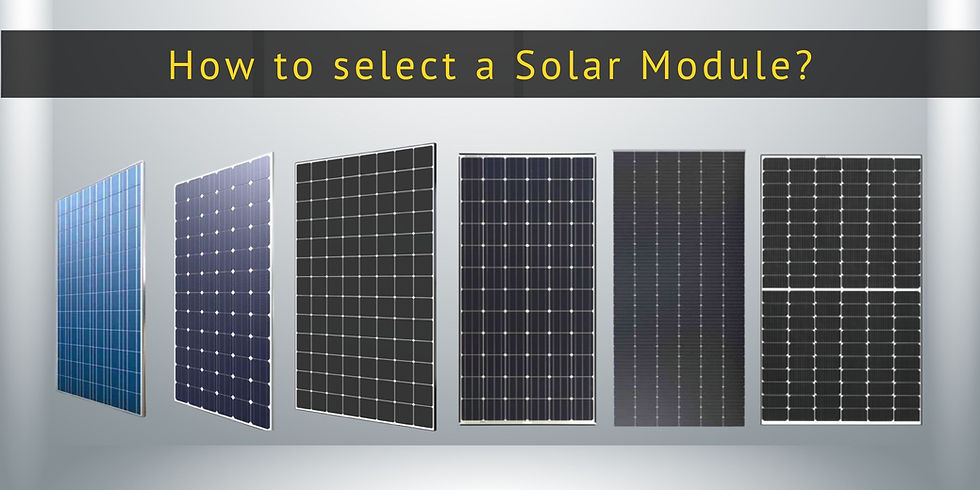Is a Roof-top Solar Power Plant Installation Safe?
- Cares Renewables

- Feb 8, 2022
- 4 min read
Updated: Sep 10, 2022

The fire incidents reported in solar power plants are a cause of concern for many customers who intend to go solar. At one point of time 2-3 solar fire incidents where reported in Australia every week. If you are not aware of safety incidents related to Solar PV, a simple google search on the topic will change your perspective.
The quality of the solar components used, the safety features of the solar inverter as well as the installation and the maintenance practices followed by the solar installer play a pivotal role in the long-term fire-safety of a Solar Power Plant. In this blog, we will discuss a few common questions related to fire safety in a Solar Power Plant Installation, and how we can mitigate it.
What causes Electric Fires?
Electrical fires are caused by electric arcing in air gaps between electrical conductors or connections. Electric arcing is caused when the current jumps from one point to another to complete the circuit. A high power electric arc can cause melt-down of conductors and start a fire.
How is Solar Power different from Electrical power used in our home?
Our homes are powered by 230 V AC power which cycles between positive and negative values touching zero volts continually. This makes it difficult for an AC arc to sustain itself and cause a fire incident.

Traditional DC Solar Power Plants with string or optimised string inverters generate up to 1,000 volts of dangerous high-voltage DC, which must run from Solar panels through the ceiling to a solar inverter located on the walls of the building, before its converted to AC. The DC power from solar modules is continuous , which makes any DC arc continuous and self-sustaining resulting in fire incidents
Watch this video to understand the difference between DC and AC Arcs:
What causes DC arcing in Solar Power Plants?
There are a large number of DC connections in a traditional string inverter solar power plant design. These DC connections, if not properly mated or of low-quality material can cause air gaps and DC arcing related fires. Each of the DC connections is a potential point of failure and has to be treated carefully during installation.
A few common mistakes that could potentially cause fire incidents are listed below:
Selection of poor quality DC connectors which may deteriorate over time
Poor quality string inverters
Incorrect crimping of DC Connectors
Mating of non-compatible DC Connector brands
Use of poor quality DC Junction Box components
Incorrect installation of components in DC junction box
Low-quality DC wires or poor DC wire routing
What can we do in case there is a Solar Fire incident?
If the fire is during the daytime, and if you don't have a Solar Inverter complaint with Rapid Shutdown, you cannot do much about the fire !!
During the daytime, Solar Modules will continue producing power, even if we shut down the traditional solar inverter. This makes the roof unsafe for fire-fighters in case of a fire incident involving traditional string inverters.
Are Governments concerned about Solar Safety?
Governments in developed markets such as the USA have strict regulations when it comes to Solar Power Plant design and installation. Only certified installers are allowed to install solar power plants in many regions. In almost all states in USA, there is a regulation called Rapid Shutdown compliance which is mandatory for solar power plants. The rapid shutdown compliance mandates that there should be a rapid shutdown switch provided on the ground floor of the buildings with solar PV installation. Once the rapid shutdown switch is turned off, it should reduce the Roof's DC voltage to less than 60 V within 30 seconds. (It also mandates that such DC voltage level should be less than 30 V outside roof boundary). The compliance will ensure fire fighters safety from high voltage DC when they are trying to extinguish a fire incident in the building.
How can we mitigate solar PV fire incidents?
Through Proper Design, Installation, Maintenance and Module Level Power Electronics
In solar installations which use conventional DC string inverters, sufficient care has to be taken in design, installation and maintenance to ensure strong DC connections over time. Additional Module Level Power Electronics can be used along with DC string inverters to make them rapid shut down compliant. Certain models of optimized string inverters with module level power electronics also have a DC-Arc detection function. The DC arc detection functionally, if properly implemented can detect a DC arc and shutdown the strings with DC arcing until its rectified by a qualified personnel.
Using Solar Micro-inverters
Microinverters convert the direct current from your solar modules to grid-compliant AC before that energy ever leaves the microinverter. No high voltage DC is running across your roof or through your attic with a microinverter sytem. This makes the microinverter technology the safest solar inverter architecture.
Please watch this video from Enphase Energy (the largest miroinverter manufacturer in the world) to understand how microinverters mitigate the fire safety risk associated with a Solar Plant Installation.
At Cares Renewables, we are focused on delivering quality products to our customers and partners. Please leave a comment, if you have any queries on this blog. Cares Renewables is an authorised Distributor of Enphase Microinverter system in India. For any enquiries please visit: https://www.caresrenewables.com/solardepot




Whether it’s about take my online english class for me to make your academic experience better. Rely on us to increase your chances of success with personalised assistance that matches your preferences and learning style. you can confidently tackle your coursework and excel in your studies.